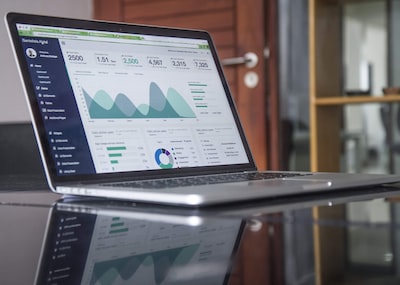Artificial Intelligence (AI) is now a big part of our lives. Companies like Apple, Google, and OpenAI are making AI a key part of our daily use. The launch of Apple Intelligence shows how AI is becoming a big deal. It’s changing how we live and work, making us think about its good and bad sides.
People are feeling guilty about using AI. They worry about how it works, how much energy it uses, and if it makes us less creative. These worries are real. For example, many phones in the US are iPhones, and AI data centers are using more energy. This could lead to more carbon dioxide in the air.

As AI keeps getting better, we need to understand its impact. We must think about its good and bad sides. In this article, we’ll explore AI’s rise, the moral questions it raises, and how to use it wisely.
Key Takeaways
- The integration of AI technology is becoming unavoidable in everyday life, raising ethical concerns among users.
- The environmental impact of AI, including increased energy consumption and carbon emissions, is a growing concern.
- Transparency and accountability in the development and use of AI are crucial to address ethical implications.
- Striking a balance between the efficiency of AI and the importance of authentic human input is a key challenge.
- Individuals and businesses must navigate the evolving AI landscape with a nuanced understanding of its impact on society.
The Rise of AI in Everyday Life
AI technology is now a big part of our daily lives. It changes how we use our devices and find information. From popular AI platforms to AI-powered features in everyday devices, AI is everywhere.
The Mainstreaming of AI Technology
AI is now common, not just in labs or special apps. Big names like OpenAI and Meta are making AI-powered search engines. Microsoft and Anthropic are working on AI agents for tough tasks.
How AI is Being Integrated into Popular Platforms
AI technology is seen in Apple’s iOS, Google’s Android, and top search engines. Users enjoy AI-powered features that make their digital life better. This includes personalized tips and smart virtual helpers.
The Unavoidable Nature of AI Integration
As AI integration grows, it’s hard to skip it in our daily routines. The fast spread of AI technology changes how we use devices and get info. It’s now a big part of our digital world.
“The integration of AI technology into our everyday lives is becoming more and more unavoidable, as it becomes a core feature of popular software and devices.”
| AI Platform | Key Features | Adoption Rate |
|---|---|---|
| Apple’s iOS | Siri, CoreML, ARKit | Over 1 billion active devices |
| Google’s Android | Google Assistant, TensorFlow Lite | Over 3 billion active devices |
| Microsoft | Azure Cognitive Services, Power BI | Over 1 million Azure customers |
Should You Feel Guilty About Using AI?
AI is now a big part of our lives, making many feel guilty. The fast growth of AI tools like ChatGPT has raised big questions about their use. People worry about using AI in work and school.
There are many reasons for this guilt. Some think using AI is like cheating, taking away from their work’s realness. Others fear being caught or judged for using AI. There’s also worry that too much AI use could make us lose our creative skills.
To deal with this guilt, experts say we should use AI wisely. We should see AI as a tool to help us, not replace us. Being open about AI use, double-checking AI work, and seeing AI’s good sides can help ease these feelings.
It’s all about finding a good balance. We should use AI’s strengths while keeping our human touch. By understanding both AI and human skills, we can use AI in a way that respects our values and creativity.
The Impacts of AI on Creativity and Productivity
Studies show AI’s complex role in creativity. Some worry AI might limit our thinking and originality. But many say AI tools like ChatGPT actually boost their creativity and work speed.
- 49% of respondents agreed that AI made them more creative.
- 56% of Gen Z individuals use ChatGPT for generating ideas and brainstorming.
- 42% of respondents apply AI technology for writing and generating content.
These results show AI’s mixed effects on creativity. It depends on how we use AI and mix it with our own ideas.
The Challenges of Implementing AI in the Workplace
AI’s benefits are clear, but using it at work is tough. Surveys show Gen Z faces many challenges and worries when using AI at work:
- 20% of Gen Z respondents encountered difficulties while using AI in their workplace.
- 2% of Gen Z individuals were dismissed for using ChatGPT at work.
- 18% of respondents stated that using AI hampered their creativity.
These problems show we need clear rules, training, and checks when using AI. This ensures AI helps us, not replaces us.
“The key is to maintain a healthy balance between leveraging the efficiency and capabilities of AI and preserving the essential human elements of work and creativity.”
As AI grows, we must think carefully about how we use it. By understanding AI’s strengths and limits, we can use it well. This way, we keep our human qualities safe while benefiting from AI’s power.
The Hidden Environmental Cost of AI Usage
Artificial intelligence (AI) is now a big part of our lives. It’s important to see how it affects the environment. From the energy it uses to the water needed for data centers, AI’s hidden costs are growing.
Energy Consumption of AI Systems
AI systems use a lot of energy. Adding AI answers to Google searches could use as much electricity as Ireland. The computing power needed for advanced AI models has doubled every 3.4 months since 2012, increasing energy needs fast.
Water Usage in AI Data Centers
AI data centers also use a lot of water. A fifth of servers use water from stressed watersheds. Global water demand for data centers could be as much as the UK’s in a few years.
Northern Virginia, with the most data centers, is especially affected. Dominion Energy saw peak energy usage of almost 2.8 gigawatts in 2022. This is about a fifth of the utility’s total sales.
Carbon Footprint of AI Operations
The carbon footprint of AI is a big problem. By 2040, ICT emissions could be 14% of global emissions. Data centers and networks are a big part of this.
Training large AI models can produce a lot of carbon dioxide. It’s like 300 flights from New York to San Francisco. This is nearly 5 times what an average car emits in its lifetime.
Tech companies don’t always share how much energy and water their AI uses. This makes it hard to know the full environmental impact. It’s a big challenge to address AI’s hidden costs.
As AI use grows, we need to work together. Businesses, academics, and policymakers must focus on sustainable AI. By using energy-efficient hardware and algorithms, and being open about AI’s environmental impact, we can reduce its hidden costs.
Balancing AI Efficiency with Authentic Human Input
AI is becoming more common, and finding a balance is key. AI tools can make tasks easier but might lose the personal touch. It’s important to keep human creativity alive.
Studies show over 50% of marketers use AI, worrying about losing creativity. AI in school assignments also raises questions about cheating. This could harm learning.
People in marketing, education, and writing feel guilty about using AI. They worry about being caught or losing their personal touch. AI’s lack of human feeling is a big concern.
“The guilt around AI tools is common among professionals across various industries, including marketing, academia, and content creation.”
But AI can also help human creativity. Companies like Hive promote using AI responsibly. They focus on keeping things transparent and ethical.
As AI gets better, the balance between AI and human work might improve. It’s like how we got used to other technologies. The goal is to use AI to help, not replace, human skills.

By finding this balance, we can use AI to boost work without losing our unique touch. This helps both the individual and the industry as a whole. It’s about using AI wisely, not replacing human input.
Transparency and Accountability in AI Usage
AI is now a big part of our lives, and we want to know how it works. We need to understand AI explainability, governance, and accountability. This is key to gaining trust from everyone involved.
Corporate Responsibility in AI Development
Companies leading in AI must be open about their systems’ energy use and environmental effects. Generative AI models are big and complex, making them hard to understand. This pushes companies to better manage data, which is crucial for AI trust.
User Responsibilities and Best Practices
AI users also have a part to play in keeping things transparent and accountable. It’s important to be truthful about using AI and to recognize its role. Best practices include double-checking AI content, not just copying it, and being critical of AI outputs.
The Importance of Disclosure in AI Usage
Being open about AI use is vital for trust and ethics. With new rules like the EU AI Act, developers and users must ensure AI benefits society. They should also audit and clean data to avoid biased problems, making AI more transparent and accountable.
FAQ
What is the rapid integration of AI technology, and how is it transforming how people interact with devices and access information?
AI technology is becoming a big part of our lives. Companies like Apple, Google, and OpenAI are adding AI to our devices and platforms. This change is making how we use devices and get information much different.
What are the common feelings of guilt that users experience when using AI, and how can they overcome them?
Many people feel guilty when using AI for work or personal tasks. They worry about cheating, losing originality, and being judged. To feel better, some suggest treating AI as a colleague and being open about its use.
What are the significant environmental impacts of AI systems, and how are tech companies addressing them?
AI systems use a lot of energy and water. Data centers for AI could increase electricity use by 160% by 2030. This could double carbon dioxide emissions. Companies like Google and Microsoft are facing challenges in meeting their sustainability goals.
It’s hard to know the full environmental impact because tech companies aren’t always transparent about their energy and water usage.
How can users balance AI efficiency with authentic human input, and what are the best practices for responsible AI usage?
It’s important to use AI wisely. Users should see AI as a tool to help them work better, not replace them. This way, they can keep their creativity and ideas.
Setting limits on AI use is key. The goal is to work with AI, not against it. This ensures the work is truly human.
What is the importance of transparency and accountability in AI usage, and what are the responsibilities of both developers and users?
Being open and accountable is vital when using AI. Tech companies should share how much energy AI uses. Users should also be honest about their AI use.
Best practices include checking AI work and avoiding copying. It’s important to disclose AI use to keep trust and ethics. Both developers and users must ensure AI benefits society without harm.




Leave a Reply